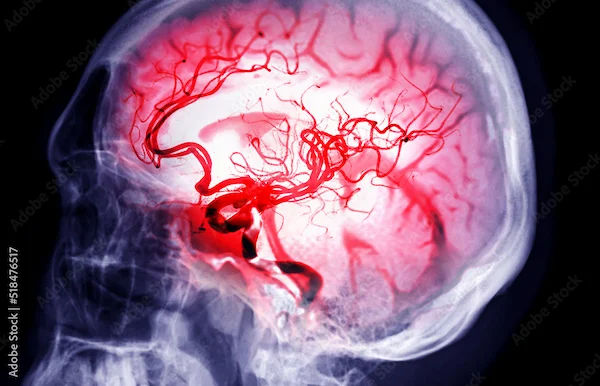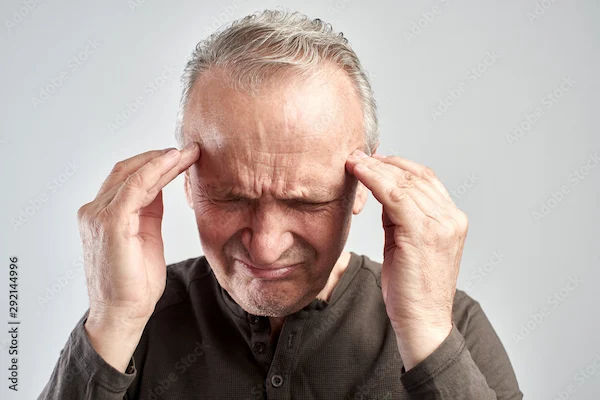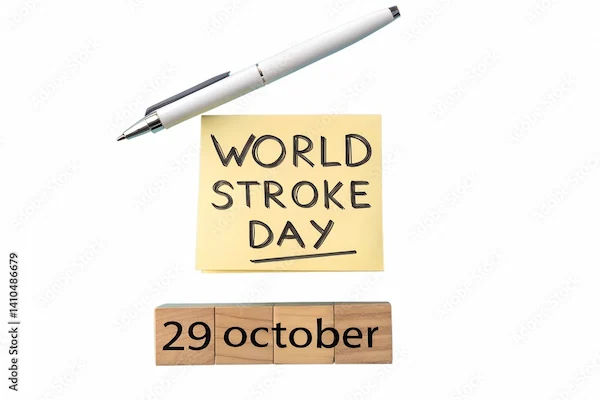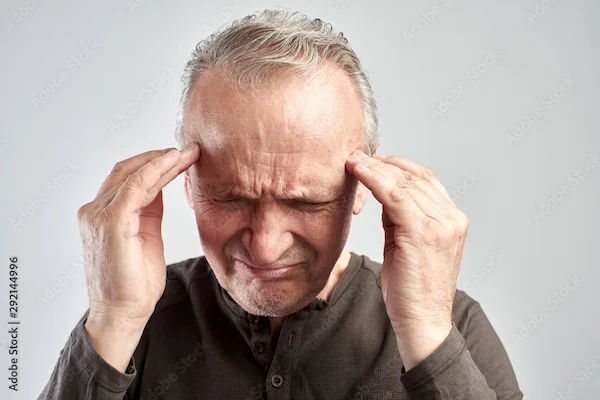Stroke Warning Signs: How to Recognize a Stroke and Act Fast
Stroke is a leading cause of disability and death worldwide. However, many people don’t recognise the warning signs of a stroke or understand how critical it is to act quickly. Knowing the early warning signs and responding quickly can make all the difference in preventing long-term damage and improving recovery outcomes.

Written by Dr. Sonia Bhatt
Last updated on 3rd Jul, 2025

What Is a Stroke?
A stroke happens when the blood supply to part of the brain is interrupted or reduced, depriving brain cells of oxygen. Due to lack of oxygen, brain cells begin to die, and this can lead to permanent damage. There are two main types of strokes:
Ischemic Stroke: The most common type, caused by a blockage in a blood vessel which supplies blood to the brain.
Hemorrhagic Stroke: Occurs when a blood vessel in the brain ruptures, causing bleeding in or around the brain.
Regardless of the type, the longer the brain goes without blood flow, the more severe the potential damage. Recognizing the signs early and getting medical help fast is critical to improving outcomes.
The FAST Approach to Recognizing Stroke Warning Signs
To help recognise the warning signs of a stroke, healthcare professionals often use the FAST acronym. This simple and easy-to-remember method can be life-saving:
F – Face Drooping
One of the first signs of a stroke is a sudden drooping or numbness in the face, especially on one side. Ask the person to smile. If one side of their face droops or appears uneven, it’s a sign they may be having a stroke.
A – Arm Weakness
Arm weakness or numbness, particularly on one side of the body, is another critical warning sign. Ask the person to raise both arms. If one arm drifts downward or is unable to be raised fully, it’s a potential sign of stroke.
S – Speech Difficulty
Difficulty speaking or understanding speech is another common stroke symptom. The person might slur their words, have trouble speaking clearly, or be unable to understand what others are saying. Ask them to repeat a simple sentence. If they struggle, it may indicate a stroke.
T – Time to Call Emergency Services
Time is crucial when it comes to stroke treatment. If you notice any of these symptoms, call emergency services immediately. The sooner the person gets medical help, the better the chances of recovery and reducing brain damage.
Other Stroke Warning Signs
While the FAST approach covers the most common signs, there are additional warning signs that may indicate a stroke. These can develop suddenly and include:
Sudden Numbness or Weakness
Numbness or weakness on one side of the body, including the arm, leg, or face, is a common stroke symptom. This may appear suddenly and without warning.
Sudden Confusion or Trouble Understanding
Stroke victims may experience sudden confusion, trouble speaking, or difficulty understanding what others are saying. In some cases, they may become disoriented or have trouble processing information.
Sudden Trouble Walking
A stroke may cause dizziness, loss of balance, or coordination problems. The person may have difficulty walking, appear unsteady, or fall for no apparent reason.
Sudden Vision Problems
A stroke can affect vision, causing blurred or double vision, or even loss of vision in one or both eyes. This symptom often comes on suddenly and without warning.
Severe Headache
A sudden, severe headache that is different from any headache the person has experienced before could be a sign of a stroke, especially if it is accompanied by vomiting, dizziness, or changes in vision. Hemorrhagic strokes, in particular, may present with an intense headache.
Sudden Difficulty Swallowing
Difficulty swallowing, also known as dysphagia, may occur in some stroke patients, especially those with damage to certain areas of the brain.
Stroke Risk Factors
While anyone can have a stroke, there are certain factors that increase your risk. Understanding these risk factors can help you take proactive steps to prevent a stroke or reduce your risk:
High Blood Pressure: The leading cause of stroke. Keeping your blood pressure in check is one of the most important steps to reduce your risk.
Heart Disease: Conditions such as atrial fibrillation and other heart problems increase your chances of having a stroke.
High Cholesterol: High levels of LDL (bad) cholesterol can lead to plaque buildup in arteries, increasing the risk of ischemic stroke.
Diabetes: Having diabetes increases the risk of both ischemic and hemorrhagic strokes.
Smoking: Smoking damages blood vessels and raises risk of stroke.
Obesity and Poor Diet: An unhealthy diet, rich in fats and salt, can lead to high blood pressure, heart disease, and stroke.
Physical Inactivity: Lack of exercise can contribute to several risk factors like obesity, high blood pressure, and diabetes.
Age and Family History: The risk of stroke increases with age. Family history and genetic factors can also play a role in your risk.
What to Do if You Suspect a Stroke
If you or someone else exhibits stroke warning signs, it’s critical to seek medical attention immediately. Call emergency services right away and do not attempt to drive the person to the hospital yourself, as emergency medical responders are trained to provide immediate treatment during transport.
Once at the hospital, healthcare providers will quickly assess the situation, typically through physical exams, imaging (CT scans or MRIs), and tests to determine the type of stroke. Time is of the essence in determining the best course of action, such as administering clot-busting medication for ischemic strokes or performing surgery in cases of hemorrhagic strokes.
Why Time Matters
The sooner a stroke is diagnosed and treated, the better the outcomes. Research shows that for every minute that a stroke is untreated, nearly 1.9 million brain cells die. This means that the faster medical intervention occurs, the less damage there is to the brain.
Ischemic Stroke: If treated within three hours with clot-busting drugs, the damage to the brain can be minimized, and recovery is more likely.
Hemorrhagic Stroke: In some cases, surgical intervention can stop the bleeding and improve outcomes, but time is also crucial here.
Stroke Prevention: How to Protect Yourself
While some stroke risk factors, such as age or family history, are uncontrollable, many lifestyle changes can reduce your risk:
Maintain Healthy Blood Pressure: Monitor your blood pressure regularly, aim for a target of 120/80 mmHg, and follow your healthcare provider’s advice on managing it.
Stay Active: Regular physical activity strengthens the heart, lowers blood pressure, and improves overall cardiovascular health.
Eat a Heart-Healthy Diet: Focus on fruits, vegetables, whole grains, lean proteins, and healthy fats. Avoid excessive salt, sugar, and unhealthy fats.
Quit Smoking: If you smoke, seek help to quit. Smoking is one of the biggest contributors to stroke risk.
Control Diabetes: Manage blood sugar levels through medication, diet, and exercise.
Limit Alcohol: Drinking too much alcohol can increase blood pressure and lead to weight gain. Stick to the recommended limits—no more than one drink a day for women and two for men.
Conclusion
Recognising the warning signs of a stroke is crucial in preventing long-term damage. The FAST method—Face drooping, Arm weakness, Speech difficulty, and Time to call emergency services—provides an easy way for anyone to identify the early signs of stroke. If you or someone you know shows any of these symptoms, remember to act fast. The faster treatment is administered, the better the chances for recovery. Taking steps to manage your stroke risk factors can make a huge difference in your long-term health. By living a healthy lifestyle, controlling underlying conditions, and staying proactive about your cardiovascular health, you can significantly reduce your risk of stroke and improve your overall well-being.
Consult Top Neurologist
Consult Top Neurologist

Dr. Abhinav Gupta
Neurologist
18 Years • MBBS, MD (GENERAL MEDICINE), DM (NEUROLOGY)
Ghaziabad
Bhava Neurocenter, Ghaziabad

Dr. Uddalak Chakraborty
Neurologist
8 Years • MBBS, MD(GENL.MED.),DM(NEUROLOGY)
Kolkata
MCR SUPER SPECIALITY POLY CLINIC & PATHOLOGY, Kolkata

Dr Chandu Samba Siva Rao
Neurologist
7 Years • MBBS, MD GENERAL MEDICINE, DM NEUROLOGY
Vijayawada
Chandu Neuro Center, Vijayawada

Dr. Madhuri Khilari
Epilepsy Specialist
11 Years • Fellowship in Epilepsy (UK and NIMHANS) MRCP SCE (Neurology- UK) DM Neurology (JIPMER) MRCP (UK) MD Medicine (MS University, Baroda) MBBS (BJMC, PUNE) Epilepsy, Cognitive Neurology, Neuro-ophthalmology Dr Madhuri Khilari has extensive experience in Treating Adult and Refractory Epilepsy. She has done two epilepsy fellowships after her neurology training, from NIMHANS and from Bristol, UK, respectively. She has worked as an independent consultant at the Epilepsy unit in Bristol that significantly adds to her experience in treating refractory epilepsies. Treatment offered: Treatment of all kinds of adult and paediatric epilepsies Finding the perfect solution for drug refractory epilepsy Presurgical Evaluation for Refractory Epilepsy, including but not limited to invasive EEG implantation planning and Brain Mapping Planning Epilepsy Surgery. Planning VNS/ other neuromodulation techniques for drug refractory epilepsy. Brain Mapping
Nanded
Apollo Hospitals Information Centre,Dr Rajendra Patil, Physiotheraphy Centr, Nanded
Dr. Lakshaman K
Neurologist
19 Years • MBBS,MS General Medicine,MCH Neurosurgery
Bengaluru
R V speciality Clinic, Bengaluru




.webp)